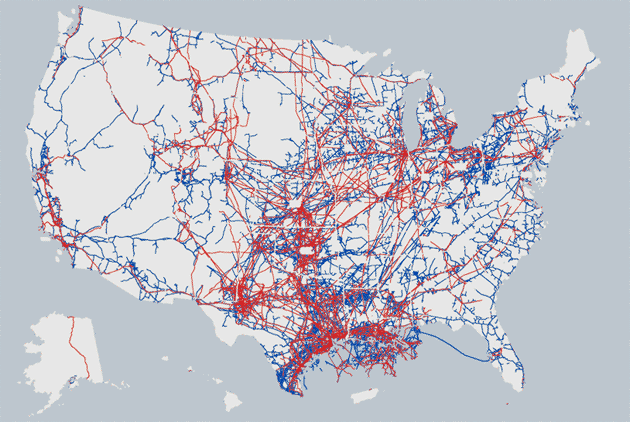By staff - Fight Toxic Prisons, May 12, 2017
 On May 8, Marius Mason was moved out of the Carswell Federal Medical Center’s (FMC) Administrative Unit, into general population. While this is a far cry from freedom, for the first time in nearly seven years, Marius is able to see the sky and feel the grass beneath his feet.
On May 8, Marius Mason was moved out of the Carswell Federal Medical Center’s (FMC) Administrative Unit, into general population. While this is a far cry from freedom, for the first time in nearly seven years, Marius is able to see the sky and feel the grass beneath his feet.
This welcome news comes weeks before the Fight Toxic Prisons convergence, to be held in the city of Denton, Texas, near FMC Carswell. The environmental activists and prison abolitionists organizing the conference have identified Carswell, located on a Fort Worth military base, as a prime example of a “toxic prison” worthy of national attention. Carswell has long been the subject of complaints about general conditions, as well as being of special concern due to its Administrative Unit, which has housed political prisoners and individuals suffering from serious mental illness. Anti-nuclear activist Helen Woodson was held in the facility until her release in 2011, and other political prisoners, including Aafia Siddiqui and Ana Belen Montes, remain there today.
Since Mason’s confinement in the Administrative Unit, advocacy efforts from his community and his lawyer have been ongoing. Advocacy work has included not only efforts to have him moved from the overly restrictive environment of the Unit, but a successful campaign to secure gender-affirming hormone treatment, making him the first known prisoner authorized to begin female-to-male gender transition in federal custody. Also during his time in the Admin Unit, the BOP has adjusted its policies on solitary confinement. Carswell administrators gave no explanation for Marius’ redesignation. Needless to say, friends and supporters believe the move is long overdue.
Shortly after his sentencing in 2010, Marius was moved from FCI Waseca to the highly restrictive administrative unit at FMC Carswell. After litigation, a FOIA request yielded a document indicating that his redesignation was due to his “radicalizing and recruiting other inmates.” No specific information was provided about why an inmate might be placed into the unit, or how Marius might be able to transition out of it. Indeed, more information is available about the BOP’s Communication Management Units (CMUs), created with the stated purpose of monitoring alleged so-called terrorists, than about the administrative unit at Carswell.
For several years, Marius’ lawyer, Moira Meltzer-Cohen, attempted without success to get the BOP to provide a written statement justifying the decision to keep him in the Administrative Unit. According to Meltzer-Cohen, the few written documents about the facility’s Administrative Unit state that it exists in order to coerce compliance with institutional safety. Upon successful behavioral modification, the inmate presumably is to transition back to general population. Marius remained in the administrative unit for years with an almost flawless disciplinary record. The facility’s redesignation of Marius into general population therefore seems to be a belated, but welcome compliance with the BOP’s own stated goals.
We are hopeful that this move may mean better control over his diet and more reliable mail service.
Meltzer-Cohen stated, “We wish Marius a lot of luck in this transition. While we may never know the reason for it, this does draw attention to the fact that the BOP finally seems to be acting in accordance with its own policy on administrative segregation in Mason’s case, after years of avoiding it.”
The Campaign to Fight Toxic Prisons (FTP) sends love to Marius in this move and extends solidarity to all people in administrative segregation as a penalty for their beliefs or mental health conditions which the BOP doesn’t want to deal with. We support the call to immediately close Carswell’s Administrative Unit entirely.
We also call on the BOP to address the long history of abuses in general population which Marius is entering. The Carswell Federal Medical Center has been the subject of more than a decade of scrutiny by groups such as the ACLU, which released an extensive report calling it a Hospital of Horrors.





 Photo from
Photo from  Inmates in Florida's prisons launched a month-long strike on Monday in protest of the state's use of "modern day slavery" within its correctional facilities.
Inmates in Florida's prisons launched a month-long strike on Monday in protest of the state's use of "modern day slavery" within its correctional facilities. On January 15th, prisoners in Florida are set to take action against prison slavery across the state.
On January 15th, prisoners in Florida are set to take action against prison slavery across the state. AUTHOR’S NOTE: If your the type who likes to cut to the chase, here it goes: There are two open comment periods for Environmental Impacts Statements (EIS) that you should know about. One for the
AUTHOR’S NOTE: If your the type who likes to cut to the chase, here it goes: There are two open comment periods for Environmental Impacts Statements (EIS) that you should know about. One for the 
 On May 8, Marius Mason was
On May 8, Marius Mason was 

 Sept. 9 saw thousands of incarcerated men and women go on strike to take a stand against civil and environmental injustice in their respective prisons. The multi-state strike was organized both inside and outside of the prisons.
Sept. 9 saw thousands of incarcerated men and women go on strike to take a stand against civil and environmental injustice in their respective prisons. The multi-state strike was organized both inside and outside of the prisons.